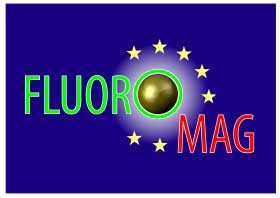| Posted: January 23, 2007 |
Less is more: New diagnostics with nanoparticles |
|
(Nanowerk News) As part of the EU 6th Framework Programme in the field of genomics and biotechnology for health, a new consortium "FLUOROMAG" coordinated by Dr. Donna Arndt-Jovin at the Max Planck Institute for Biophysical Chemistry in Goettingen, Germany, will develop new diagnostic tools for use in tumor biology and the detection of very low levels of pandemic viruses.
|
 |
|
Precise diagnosis is based on multiple end-points involving several tests with antibodies or DNA probes for particular biomolecules in a tumor or a virus. Antibodies and DNA are usually labeled with different fluorescent dyes, generally requiring multiple modes of excitation and detection that can render the measurement slow and laborious. Advances in nanotechnology have led to the emergence of new fluorescent materials, semiconductor nanoparticles (NPs) called "quantum dots", which can be excited by a single light source (wavelength) but that according to their size and composition emit in discrete and separated spectral bands. The "multiplexing" of such probes is thereby greatly simplified. Scientists working in the Molecular Biology Dept. have shown that single quantum dots can be detected on and in living cells.
|
|
The project of the consortium has two elements. The first is the development of other classes of still smaller NPs, i.e. with sizes below 10 nm (less than a millionth of a cm): fluorescent noble-metal "nanodots" and magnetic NPs. These materials are superior to conventional fluorophores in that they exhibit extreme photo- and chemical stability. The nanodots should have reduced toxicity and greater target accessibility than quantum dots, yet offer a similar detection sensitivity. They will be derivatized and tested for specific recognition of biomolecules such as tumor markers (for breast cancer) and global viral disease (Hepatitis C and Dengue Fever). Other core-shell "onion-like" NPs developed by the partner in Santiago de Compostela have diverse and strong magnetic properties and will be tested for their application in micro-chip and MRI diagnostics.
|
|
In a parallel effort, several of the partners will optimize the design and performance of a new type of high-speed, sensitive, optically sectioning microscope known as the Programmable Array Microscope (PAM), for use in both the basic research and medical communities. The PAM is very versatile in that it implements many imaging modalities and has been under development in the Molecular Biology Dept. for the past 10 years. It has single-NP sensitivity, and is ideally suited for measurements of thick samples such as tissue slices and patterned arrays, important objects for diagnostic tests.
|
|
The FLUOROMAG consortium has been awarded € 2.5 million by the European Union for a period of 3 years. The research project leaders of the consortium are: Donna Arndt-Jovin (MPIbpc, Germany), Arturo López-Quintela (Univ. of Santiago de Compostela, Spain); Vinod Subramaniam (Univ. of Twente, The Netherlands); Quentin Hanley (Univ. of Nottingham Trent, UK). Two small businesses (SMEs) are included in the consortium; Nanogap Sub-nm-powder SA, Spain (Tatiana López del Rio) will produce the NPs in large scale and Cairn Research Ltd., UK (Martin Thomas) will produce and market the newest technical realizations of the PAM.
|

